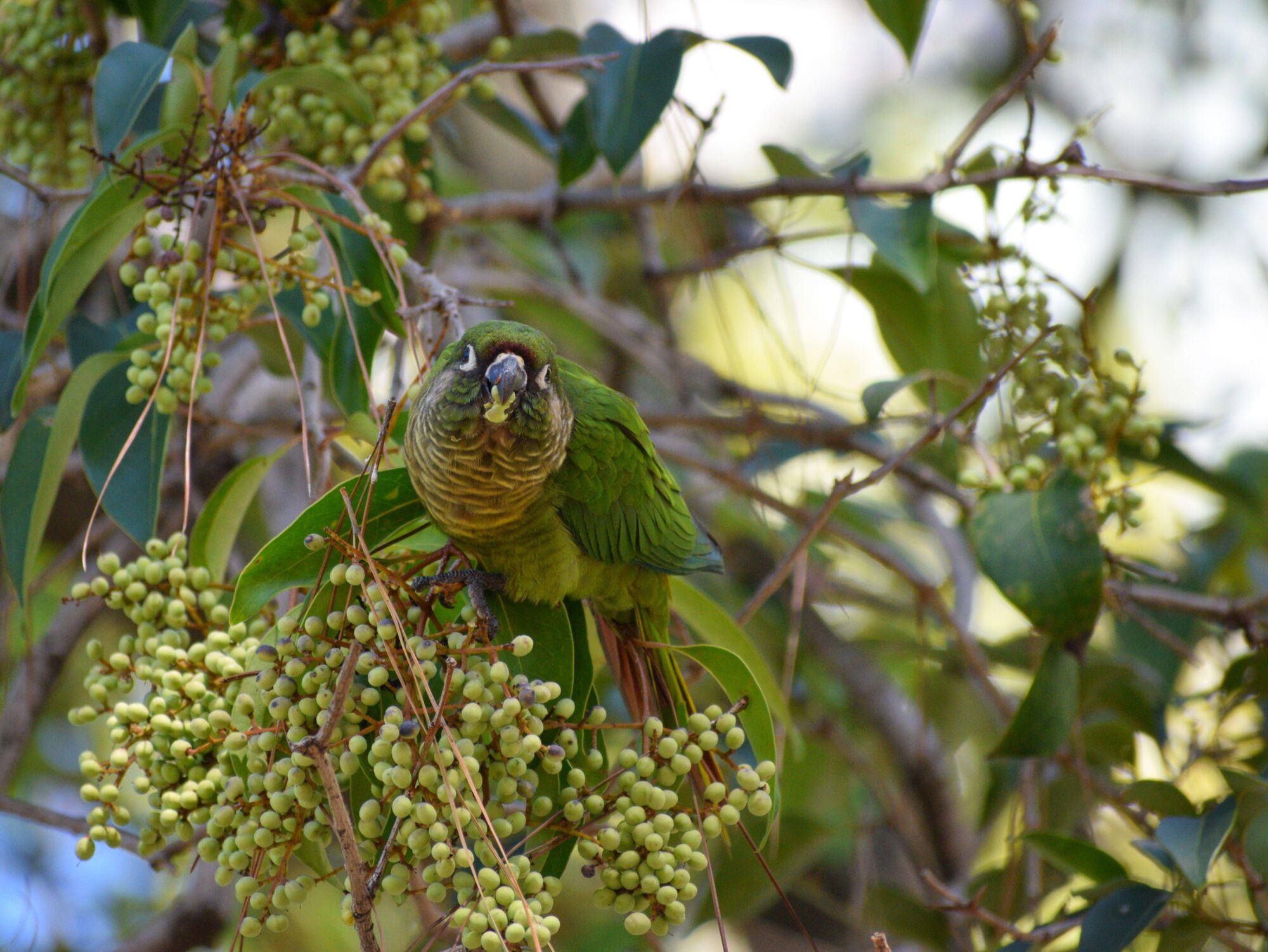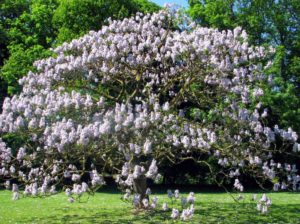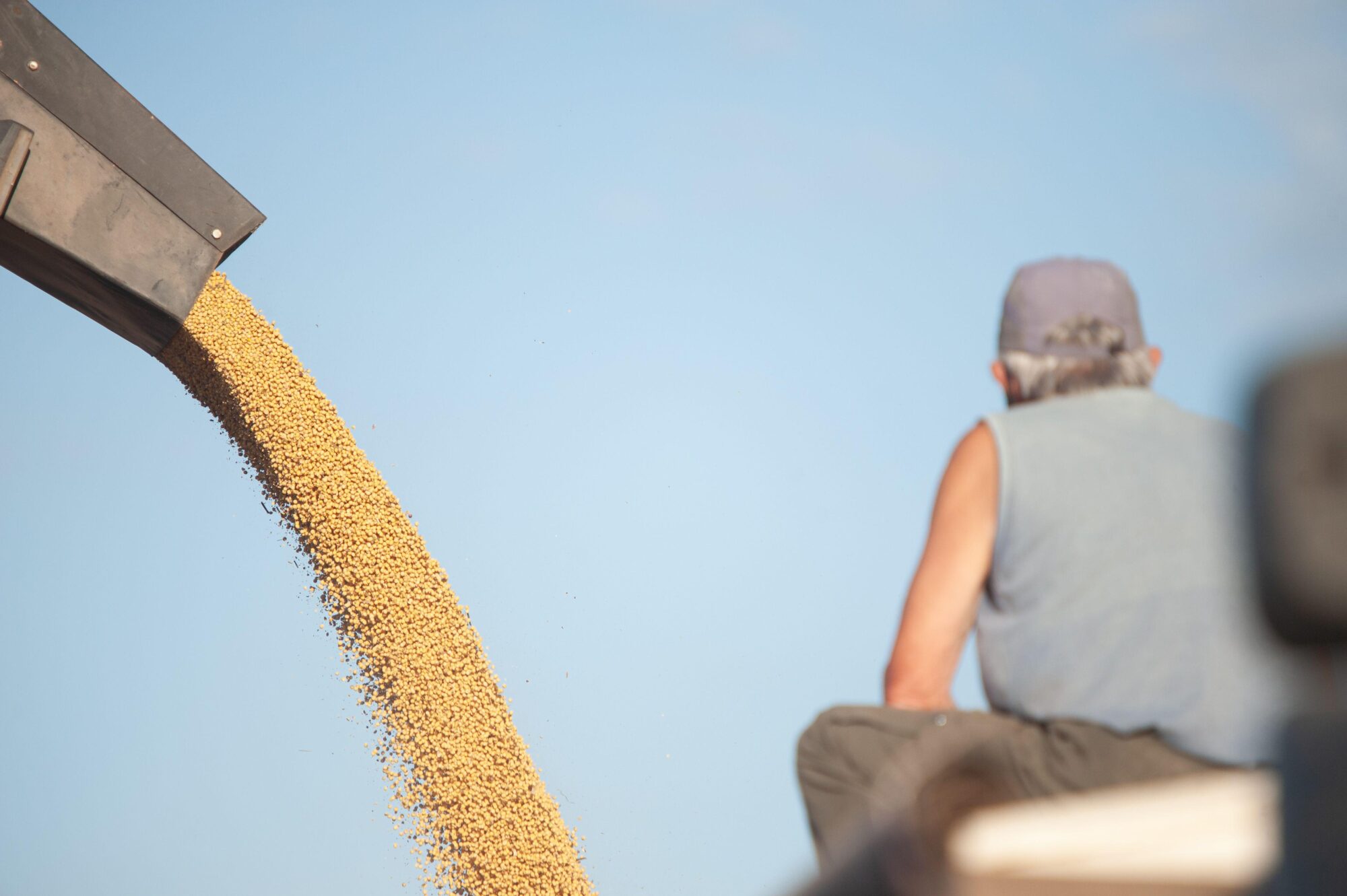The Chinese privet (Ligustrum lucidum) was first planted in Argentina in the early 20th century, when it was seen as a desirable addition to parks and gardens for its year-round green leaves. An evergreen tree native to southern China, its presence in the South American country quickly spread, both as an ornamental and urban tree, particularly in the central province of Córdoba.
By the 1950s, the gardens of grand mansions and castles in the mountains of Córdoba were replete with Chinese privets, also known as glossy privets, along with many other exotic plants. It didn’t take long for the tree to spread to surrounding areas of vegetation, where it began to gain ground over other native forest species.

Since then, its advance has become unstoppable, putting local ecosystems, habitats and animals at risk. In parts of Córdoba’s Sierras Chicas mountain range, it is estimated that about 20% of the forested area is now dominated by this tree, prompting an urgent search for solutions to protect the environment and native vegetation.
Not only in Argentina but across the Americas and around the world, including countries such as Australia and New Zealand, many species of privet are considered invasive. Several characteristics make the Chinese privet an effective invasive species, including is its ability to adapt to diverse environments and the accelerated growth of its trunk and branches, which help it to outcompete native species and dominate forest structure. Its dense canopy of evergreen leaves also blocks the passage of sunlight, hindering the growth of native vegetation below.

Several research groups are carrying out studies to better understand the environmental impact of the Chinese privet on local ecosystems, while others are finding creative solutions to make use of the plant, including employing its wood in furniture products and construction.
Risks to birds
Vegetation change, whether as a result of invasive species or other drivers, often has consequences for bird populations that inhabit a landscape. The emergence of privet forests is no exception, and over the last decade, the trees have been observed to have a direct impact on bird communities and species diversity in Argentina.
A study from central Argentina published in the Biological Invasions journal found that forest areas dominated by the Chinese privet have seen a loss of up to 37% of bird species, substantially higher than the losses observed in native and mixed forests.

The study stated that the invasion of Chinese privets had an overall negative effect on bird populations. In the Chinese privet-dominated areas, fewer birds were found overall, but the composition of species had also changed: for example, a large population of pigeons was now present, having adapted to the trees.
The researchers found that the pigeons were present throughout the year in mixed or privet-dominated forest areas, an occurrence that is uncommon in native forests, where food availability decreases during winter.
“We believe that this non-difference [in bird numbers between seasons] is due to the fact that there are many generalist species in the native forest that tolerate disturbances,” said Laura Bellis, a researcher at the Mario Gulich Institute for Advanced Space Studies in Córdoba and lead author of the paper. “As these forests have been transformed and altered over a long period, the most sensitive species have probably disappeared.”
Birds are not the problem, it is other species that excrete privet seeds, acting as transport for the tree to reach places where it could not reproduce
The birds that inhabit the privet forests are changing their diet, less frequently consuming fruits from native trees such as coconut and pepper tree (Schinus molle) – whose berries are known as “pink peppercorns” – and instead incorporating the berries of the Chinese privet, which have the advantage of being available year-round. There is as yet insufficient information on the nutritional composition of these fruits, but there is some concern that their potential lack of key nutrients could contribute to long-term negative effects for bird populations.
“Predatory birds break down the privet seeds when they eat them, so birds are not the problem,” Bellis said. “But there are other species that eat the seeds, and then excrete them in other places. They are like transport, so it reaches places where it could not reproduce vegetatively or could not be carried by humans.” Bellis noted that this is one of the main dispersal processes that favours the species’ germination.
Competition for water
Invasion by the Chinese privet is also presenting issues in the water cycles of forest ecosystems. The tree’s own biology allows it to outcompete native forest, explained Juan Ignacio Whitworth Hulse, a researcher in environmental studies at the San Luis Institute of Applied Mathematics (IMALS). The Chinese privet, he said, can take on more water than native species such as the pepper tree: “In terms of the rainwater it stores under the forest, the privet can be seen as a solo artist, while the Schinus molle is more of a team player.”

In the water cycle, precipitation is redistributed when it comes into contact with vegetation. In the case of privet forests, the tree’s funnel-shaped crown and smooth-barked trunk allow it to channel water directly to its roots.
Whitworth Hulse’s own research comparing water use in native and privet forests in Argentina showed that privet forests accumulate more water and can help to conserve soils during wetter seasons, as they allow less water retention on the surface. However, he said this may be “almost the only positive aspect of the comparison”, with the thirsty tree’s reduction of soil moisture posing more problems, particularly during dry seasons.
“The privet continues to advance towards headwaters and grassland areas, which is where most of the water accumulates in Sierras Chicas,” said the researcher, highlighting that the streams in that area have a significant flow, with water available year-round. The invasive species’ behaviour could therefore affect water availability.
Another impact of the Chinese privet on soils and organisms is seen in the composition of fungal communities, as highlighted by a 2020 study published by the Argentina Association of Ecology. Fungi play a key role in decomposing organic matter and in many cases are bioindicators of the environmental health of an ecosystem. The paper reported that the advance of monospecies forest with the presence of only Chinese privet could reduce the diversity of these fungal communities and affect soil chemistry.
Solutions in timber
Other researchers are also looking for creative ways of capitalising on the increasing abundance of the Chinese privet.
Currently, the tree’s wood has no commercial use, with the remains from pruning or extraction of these trees mostly transformed into waste that, in the best of cases, is disposed of in local treatment facilities or burned.
Research teams are therefore working on solutions that could see the tree’s wood used as a building material. Although there are as yet no conclusive results, some early evidence seems to indicate that its timber could be appropriate for building houses.

“Preliminary findings from small samples have indicated that privet wood is suitable for obtaining structural elements such as beams, columns and trusses,” said Federico Strzelecki, a researcher with the National Council for Scientific and Technical Research (CONICET) and the Experimental Centre for Affordable Housing (CEVE), an NGO based in Córdoba.
The research team determined the resistance, surface humidity and fragility of the material in small samples. Strzelecki said that it would be necessary to carry out tests on a larger scale, for example, in building full-size housing prototypes.
Another initiative that seeks to take advantage of privet wood as a construction material while also helping to contribute to restoring the native forest is the Siempre Monte project, coordinated by Valeria Fenoglio, a researcher with CONICET and the Centre for Research and Studies on Culture and Society (CIECS).
Together with a team of professionals in bio-construction, architecture, engineering and carpentry, they have designed and developed a lightweight, prefabricated privet wood construction system that is modular, quick to assemble and has a low environmental impact.

Based in Unquillo, a city in the Sierras Chicas, the team has so far studied the characteristics and behaviour of privet wood, and have created 90 sample pieces to be used in the system. The project plans to build a hall using panels and rafters made of this wood in order to continue studying the application on a real scale.
Beyond its innovations using Chinese privet wood, the Siempre Monte project also strives to apply circular economy principles, and brings in experience from across manufacturing, government, science and technology.
Fenoglio said the project works in conjunction with local governments to carry out management and control of the invasive species through the mapping and monitoring of affected areas, from which trees can be extracted and taken to local sawmills for preparation into timber.

The researcher described Siempre Monte’s approach to the species’ control as a “circular proposal”, as the removal of these invasive trees is complemented by the restoration and reforestation of the native forest. Together with Proyecto Hormiga, a cooperative based in Córdoba that promotes agroecology and green waste recycling, they have created a nursery and a seed bank of native species. In this way, they look to create a “closed loop” of reuse and repair.
More reforestation, more technology
The invasion of Chinese privet is not a new issue in this part of Argentina. In some areas of the Sierras Chicas, the area occupied by the species was already 50 times larger in 2006 than it had been in 1983.
Looking ahead, researcher Laura Bellis said it will be difficult to turn back the clock and reverse the trend: “If the privet forests can be mapped from optical and radar [satellite] images, then it is a sign that the invasion process is very severe.”
She added that increased awareness of the importance of reforesting with native species and guarding against invasive species is sorely needed. Gardeners should also be encouraged to embrace native plants in gardening and landscaping.
If privet forests can be mapped by satellite, it is a sign that the invasion process is severe
Many believe the use of wood for housing could present promising opportunities for both technological development and a response to the housing shortage in this part of the country. Projects such as Fenoglio’s Siempre Monte could offer an alternative – and local – solution to environmental, social and economic issues.
For Whitworth Hulse, greater use of the tree for timber is “the only possibility to control the population of this species”.




